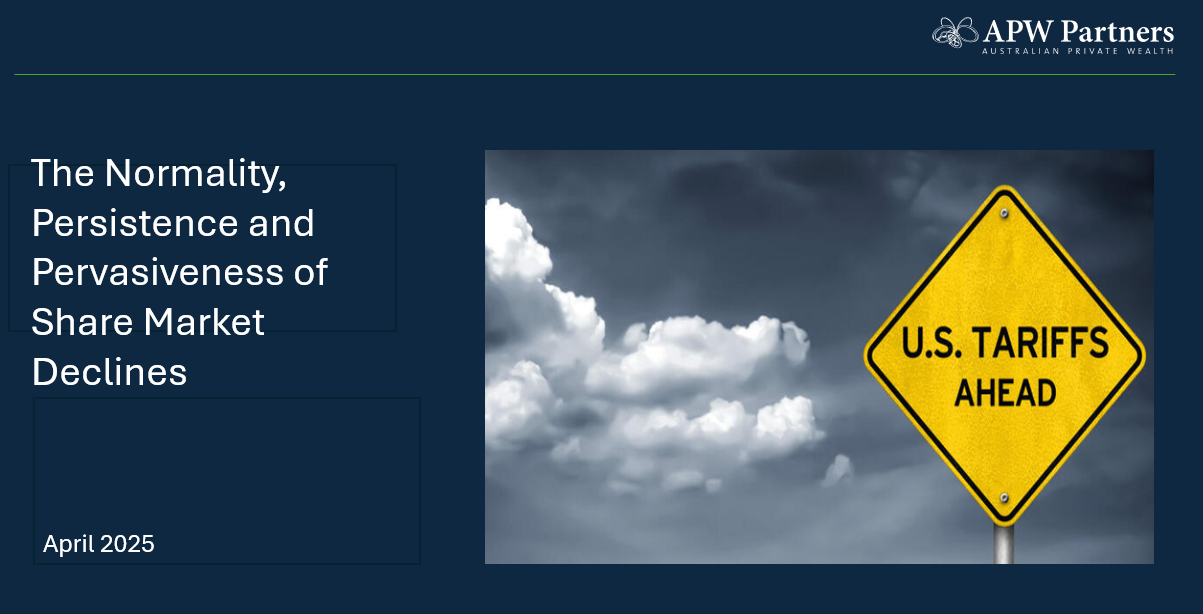A History of Market Ups and Downs

For the past week, we have seen continued significant volatility in global financial markets and anticipate this to continue for some time yet.
As at the close of trade on Thursday 12th March, the Australian Sharemarket (ASX/S&P All Ordinaries Index) closed at 5,370, down -21% for the year to date (since 31 December 2019). This fall places shares technically in the midst of a Bear Market, defined as a 20% drop from a recent high. Measured from the absolute peak in markets in mid-February, the decline has been -25%.
In times like these, it can be hard to watch the headlines and, closer to home, not to worry about what’s happening in your portfolio. Regardless of the stellar performance of markets in the calendar year of 2019, a market drop like this makes all of our pulses pound a little faster.
Importantly at this juncture, it is most helpful to look at the longer-term perspective and to understand how markets typically respond to steep declines. Whilst every new crisis has its own unique attributes, they all share a common outcome with the passage of time. This is why APW designs client portfolios to be resilient and endure the sorts of events currently being experienced (even though capital values are temporarily depleted).
As highlighted in the chart below, the frequency and depth of the red bear market valleys pale in comparison to the scale and duration of the blue mountain peaks. We have no reason to expect that this time will be any different, and indeed its causes and potential consequences seem less severe than the events of 9/11 or the Global Financial Crisis.

Although it has been more than a decade since we’ve experienced a true bear market, these market conditions are nothing new. With the exception of the Great Depression, every bear market experienced since 1926 has lasted about two years (or less) and has been followed by periods of sustained growth.
Another perspective comes from Ron Lieber – The New York Times columnist, who recently published an article entitled, “The Market Is Moving | Most People Should Sit Still”. In the article Leiber pointed out; in 1987, 2001, and 2008 stocks fell by 10-20% in relatively quick fashion. This is just the reality of markets, and we expect that “we’ll see it again after this passes”.
Another long term study of market recovery rates following a significant decline is highlighted in the chart below, demonstrating the typical returns in the 1, 3, and 5 years thereafter.

Chart | Fama French Total US Market Research Index Returns – July 1926-December 2019
Importantly over the long term, it remains a key component of the APW investment strategy to hold shares in companies as part of a well-diversified portfolio. For some, selling shares now with a view to buying them back at a later point may seem like a sensible option to consider – however in reality it introduces speculation and exposes the portfolio to an even greater risk – of permanent capital loss as a result of poor timing, costs and tax.
A key adjunct to the strategy is to hold a substantial portion of client portfolios in investment grade bonds issued by Governments and creditworthy corporations, which serves to dampen the overall portfolio volatility. Further, we focus on ensuring an adequate cash balance (topped up by regular distributions of dividends, rent and interest) to provide liquidity for living expenses and contingencies in anticipation of both rising and falling sharemarkets.
Whilst we can’t tell you with certainty when things will turn around or by how much, we do expect that this, too, shall pass. We also expect that adhering to sound investment principles – having a well- diversified, low-cost portfolio, keeping a long-term view, and rebalancing in a disciplined fashion – will continue to deliver positive returns and cashflow over the long-term.
If you have any questions, we encourage you to reach out to our team. We are ready to discuss with you at anytime.


